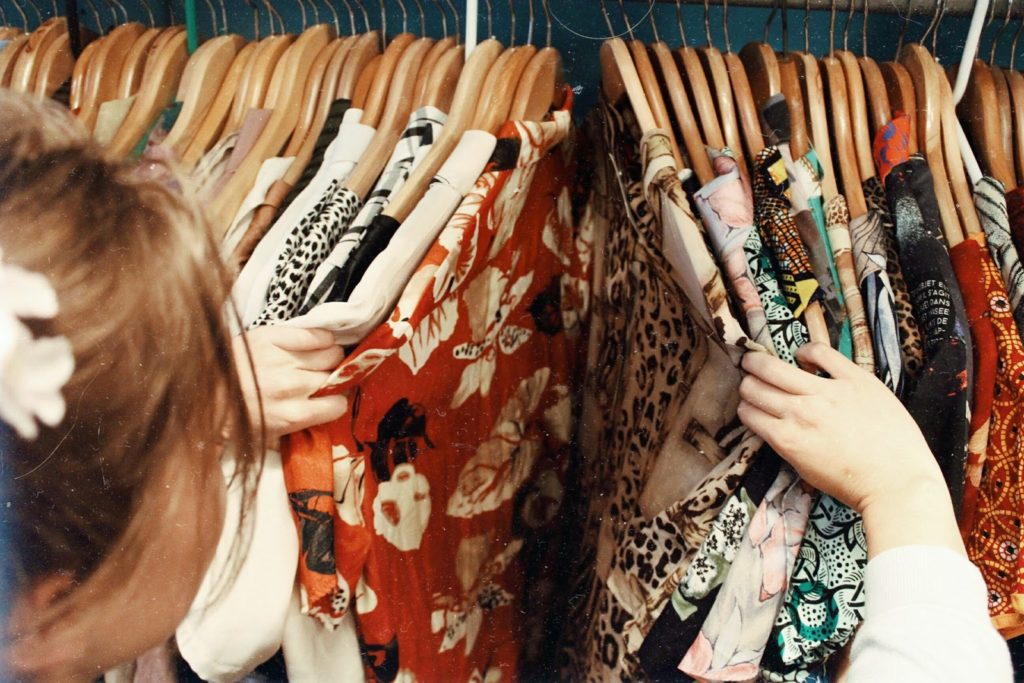SCENARIO: You see a lot of people in this boutique inside the mall. You were out on a budget but thankfully, this cute dress you wanted was on sale. The next day, you decide to wear it. To match the cute dress, you pimp yourself with some jewelry and makeup. While walking to school, you see eyes staring and heads turning, including your crush. And how would you feel? Happy, of course.
But have you ever asked yourself why was the dress on sale?

Before, fashion companies used to tediously make garments and release their collection every two seasons. It would then be showcased on runways during fashion week. Presently, this is no longer the case—thanks to enormous fashion companies. Instead of releasing the company’s new collection every 2 seasons, it is now being released every 2 weeks.
However, a problem arises due to the influx of new clothes coming in every 2 weeks, how shops will make room for the upcoming new collection?
SALE.

Shops will hold a sale of last week’s collection making the clothes cheaper. Therefore, the cheaper it is, the more people will come in and buy the clothes. Not only is the turnover of the new collection fast, but also the clothes are sold at a cheap price. This is all thanks to a trend called fast fashion.
Fast fashion is a contemporary term used by fashion retailers to express that designs move from catwalk quickly to capture current fashion trends. The term “fast fashion” was coined by Anne-Marie Schiro when she wrote the article “Two New Stores That Cruise Fashion’s Fast Lane.” for the New York Times. Since fast fashion moves quickly, the trend of fast fashion causes serious ramifications.
The dangers of fast fashion
Cotton is the most integral part of making clothes since it is essential to produce garments. However, growing cotton has also changed because of the system of fast fashion.
Since there is a higher demand, the supply for the material must also keep up. The fashion industry expects cotton farms to deliver as if it were factories equipped with a well-oiled machine. To suit these needs, agricultural companies made genetically- modified cotton seeds. This new advancement in technology has been detrimental to the environment.
An article by INQUIRER.net mentions Hannah Theisen, host of a Philippine event, “The Local Fashion Revolution Movement”. She reminds the people, specifically the millennials on the detrimental effects of fast fashion to our environment. According to Theisen, “We discard so much textile wastes, so many garments that are still usable and then they end up in landfills and create a lot of environmental [problems].”
In addition to that, fast fashion also contributes negatively to the laborers. A documentary by Andrew Morgan, “The True Cost”, dug on the people behind and lack of ethics in the fast fashion industry. America and other European countries outsource its labor and material in developing countries such as the Philippines, Bangladesh, and India, since they generate lesser costs. Thus, allows America and European countries to save millions of dollars.
Under the control of big fast fashion companies, sweatshops can mostly be found in developing countries. It’s a workshop where manual workers are employed at very low wages for long hours and work under poor conditions.
The fast-fashion companies demand the sweatshops to sell their labor and material at the cheapest price possible or else the companies will threaten to pull out their money. Therefore, these fast fashion companies can easily cut the cost of its production.
Time and again, fast fashion has been seen as harmful in developing countries such as Bangladesh, Cambodia, and India. Despite the prevalent issue of the mistreatment of workers, these companies continually deny the breaches in labor ethics such as the unsafe working environment. The garment workers are exposed to harmful chemicals that have not only affected their health but also the community that they live in. We should all keep in mind that before getting too excited about sale items, we should also think about the laborers who are suffering from the system of fast fashion.
InqPOP! Creator Community/Willanicole Alexa Ngo


